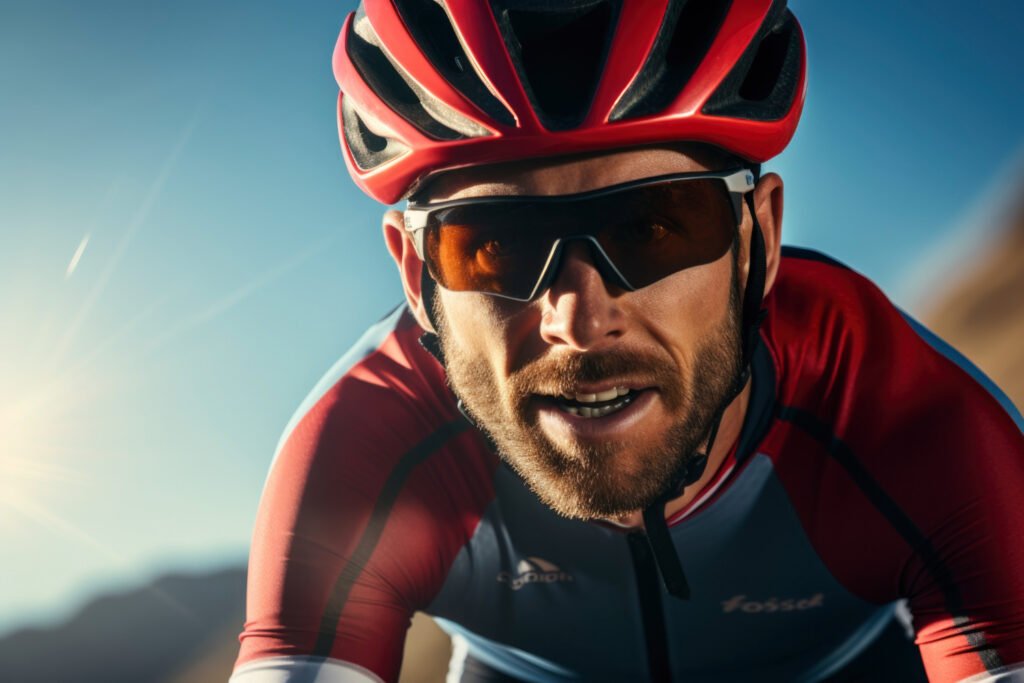The Best Fluffy Pancakes recipe you will fall in love with. Full of tips and tricks to help you make the best pancakes.
Okay, so here’s something that’ll probably annoy you—you’ve spent hundreds (maybe thousands?) on that perfect wheelset. Your power meter syncs flawlessly with your head unit. You’ve memorized your FTP down to the decimal point. But when you’re halfway up that soul-crushing climb and someone attacks… your legs are there, but your brain just nopes out.
I’ve watched this happen. Hell, I’ve been this person.

The secret elite riders guard like it’s some kind of sacred ritual? They train their minds with the same obsessive precision they bring to interval sessions—maybe more. But here’s the weird part (and neuroscientists are just now really digging into this): the most powerful technique isn’t some meditation app or motivational mumbo-jumbo. It’s what researchers call “mental time travel”—basically pre-living your ride so intensely that your brain legitimately can’t tell the difference between imagination and actually grinding out those watts. Your neural pathways fire, your nervous system primes itself… all without touching your bike.
Sounds crazy? Maybe. But it works, and almost nobody does it because we’re obsessed with what we can measure and post online.
Why Everyone Ignores This (Even Though It Changes Everything)
The Myth That Mental Toughness is Just… There
Most riders think you’re either mentally tough or you’re not—like it’s embedded in your DNA or something. This belief sticks around because we see certain cyclists who never crack under pressure and assume they came out of the womb that way. Wrong. Completely, provably wrong.
Mental resilience is trainable. As trainable as your threshold—actually, probably more trainable because your mind adapts faster than your mitochondria ever will.
Think about your last hard ride. What failed first? Be honest. Was it truly your legs turning to concrete, or did your mind start that familiar negotiation—”maybe I can ease up just five watts, no one will notice, this hurts too much.” That voice? It’s your brain’s overprotective instinct, creating psychological walls disguised as physical limits. Elite cyclists haven’t silenced that voice (you can’t, really)—they’ve learned to hear it, acknowledge it, then tell it to sit down and shut up through systematic mental conditioning.
The problem is mental training feels… invisible. Can’t screenshot your “confidence watts” for Instagram. There’s no Strava segment for sustained focus under fatigue. Coaches love tangible stuff—power curves going up feels like progress you can point to.
But ask yourself this: how many races have you blown despite having the fitness? How many training rides collapsed because your head quit before your body actually needed to?
Here’s how you start: Be specific—just like you wouldn’t prep for a crit by doing 5-hour endurance slogs. Before key workouts, practice controlled breathing: inhale for 4, hold for 7, exhale for 8. (Sounds simple, feels weird at first, works ridiculously well.) This triggers your parasympathetic nervous system, creating physiological calm that tricks your mind into feeling in control. During intervals when everything screams STOP, try “acknowledge and redirect”—notice the pain, don’t fight it or judge it, just… redirect to your cadence. Your breathing. Something technical. You’re training your mind to function alongside doubt, not despite it.
Visualization is NOT Daydreaming (And That’s Why It Fails)
Most cyclists who “try” visualization basically daydream about winning—feels nice, does nothing. Then they abandon it as pseudoscience garbage when performance doesn’t magically improve.
Real visualization is neurological dress rehearsal. When you do it right (with genuine sensory detail), your motor cortex lights up like you’re actually riding. Olympic athletes spend hours in vivid mental simulation—not imagining vague success montages but rehearsing specific technical sequences, decision points, the burn in their quads at kilometer 37 when the breakaway splinters.
Why does everyone skip this? Because effective visualization is exhausting. It’s actual mental work without the endorphin hit of spinning your legs. Way easier to watch YouTube cycling content or do another noodling recovery ride than sit still and mentally rehearse with movie-quality clarity.
Do this: Before important rides, invest 10-15 minutes in detailed mental rehearsal—and I mean detailed. Close your eyes. What does that rough patch of asphalt at the base of the climb look like? How does wind feel on your forearms at 40 kph? Where exactly will you launch your attack? Feel your hands gripping the hoods, taste that metallic effort-taste, hear your breathing getting ragged. Here’s the crucial part—include adversity. Visualize your legs screaming, visualize that moment when doubt floods in, then mentally rehearse your response. You’re building a performance library your brain can access when race-day stress hijacks rational thought.
After rides (especially hard ones), conduct mental replays: revisit key moments, analyze your decisions, mentally rehearse better responses. It feels strange at first… stick with it.
Building Confidence Through Micro-Proof (Not Podiums)
Confidence isn’t built from trophies or KOMs—it’s constructed from accumulated evidence that you can handle what’s next. Most cyclists do this backwards: waiting to feel confident before attempting hard efforts. Elite performers flip it: confidence gets built through intentional micro-wins that prove capability incrementally, almost boringly.
This gets overlooked because we worship breakthrough performances while ignoring the unglamorous repetition making them possible. Every uncomfortable interval you complete? That’s not just aerobic adaptation—you’re depositing proof into your confidence bank account. Every time you execute your pre-ride routine despite feeling flat? You’re demonstrating self-trust to yourself.
I remember this one training ride last spring—felt terrible, legs heavy, motivation nonexistent. Did the session anyway (barely). Hitting those targets felt better than any easy ride where I felt great, because I proved something to myself about who I’m becoming.
Make this practical: Stop labeling rides as simply “good” or “bad” based purely on power numbers. After each session, identify three specific wins—maybe you maintained focus through the final interval despite wanting to quit, executed your nutrition perfectly, stayed mentally present during recovery instead of doom-scrolling Strava. Use positive self-talk as factual reminders, not empty affirmations: “I’ve survived harder intervals.” “My training prepared me for this exact moment.”
Create milestone markers that aren’t just outcome-based (winning races, hitting FTP targets) but process-oriented: executing your pacing strategy perfectly, managing pre-race nerves effectively, staying present during the pain cave. Each achieved milestone becomes evidence—concrete, undeniable evidence—that you’re becoming the rider you’re training to be.
Do Something About It (Or Keep Wondering Why You’re Not Faster)
Uncomfortable question time: if dedicating 15 minutes daily to structured mental training could unlock the physical fitness you’ve already built… would you actually do it? Or would you convince yourself you’re too busy, defaulting to another hour scrolling forums or obsessing over whether ceramic bearings are worth it?
The riders passing you probably aren’t more talented. They’ve just stopped ignoring half the equation.
Your challenge—this week, not “someday”: implement one technique from each category. Ten minutes visualizing your next key ride with sensory precision. During your hardest interval, practice controlled breathing and focus redirection when your mind starts negotiating. After each ride, identify three wins regardless of whether you hit targets.
The secret’s out now. Question is whether you’ll use it. Check our Cycling Training Guide for more tips !





